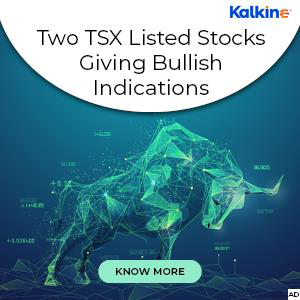Highlights
- The European Union is proposing a uniform tariff approach while seeking favorable terms for key manufacturing sectors.
- Tesla and Boeing may face operational pressures amid evolving transatlantic trade dynamics.
- A critical deadline is fast approaching, prompting negotiations focused on broader cooperation and industrial alignment.
S&P TSX-linked industries are under renewed focus as the European Union and the United States engage in negotiations aimed at reshaping cross-border trade policies. Automotive, metals, and aerospace sectors are especially impacted, as leading companies such as Tesla and Boeing remain embedded in complex international supply chains. The policy environment is evolving rapidly ahead of a key deadline that could redefine transatlantic commercial terms and influence the broader industrial economy.
Tariff Framework and Sector-Specific Considerations
S&P TSX industries are closely watching discussions around a proposed uniform tariff approach from the European Union, which may apply broadly across goods exported to the United States. At the same time, negotiators are advocating for improved trade conditions in areas such as pharmaceuticals, semiconductors, alcohol, and aircraft. Automotive and metals products are central to these talks, as both sectors face elevated duties that the EU seeks to revise.
While the framework may tilt toward U.S. commercial preferences, European representatives are exploring acceptance contingent on favorable trade adjustments. The urgency to finalize an agreement has intensified, given the broad implications for manufacturing exports and bilateral economic ties.
Market Sensitivity and Broader Economic Implications
S&P TSX exposure to global market sentiment has grown, with equity responses reflecting cautious anticipation of a resolution. Market fluctuations signal increased awareness of the negotiation’s trajectory and its consequences for sectors dependent on stable trade flows. Although primarily centered on U.S.–EU exchanges, the developments carry implications for Canada-based producers and exporters participating in the international manufacturing ecosystem.
Key manufacturing sectors associated with the TSX Composite Index are observing the situation closely, particularly given their indirect exposure to shifting tariff regulations and evolving supply chain dynamics.
Retaliatory Measures and Strategic Trade Responses
S&P TSX sector resilience may also be tested as the European Union outlines its countermeasure strategy. A series of retaliatory tariffs is planned, targeting a wide range of goods including agricultural products, industrial goods, and commercial aircraft. These measures are intended to create leverage in ongoing discussions while protecting vital European industries.
Beyond tariff responses, additional tools such as export limitations and procurement restrictions are being evaluated. These mechanisms are designed to broaden the EU’s defensive stance in the face of policy asymmetry and potential trade disruption.
Operational Risks for Multinational Manufacturers
S&P TSX–connected supply chains could experience indirect impacts if multinational manufacturers like Tesla and Boeing face disruptions. Tesla, which operates within the European production landscape, may encounter increased logistical and cost pressures if tariff escalations are triggered. Similarly, Boeing could experience increased trade friction should aircraft-specific duties be enacted by European authorities.
Negotiators are assessing multiple outcomes, ranging from partial agreement to an extension of discussions. The range of scenarios highlights the complexity of maintaining balanced trade frameworks in an increasingly regulated environment.
Long-Term Alignment Beyond Tariff Disputes
S&P TSX focus also extends to strategic aspects of the dialogue, including proposed cooperation on liquefied natural gas (LNG) and artificial intelligence (AI). These discussions signal an interest in shifting the conversation from immediate trade disputes to long-term partnership across sectors critical to both economic regions.
Whether an accord is reached in time remains uncertain. However, ongoing negotiations reflect the intricate links between global trade policy and manufacturing performance, with S&P TSX–related industries poised at the intersection of policy, supply chain resilience, and strategic economic realignment.




